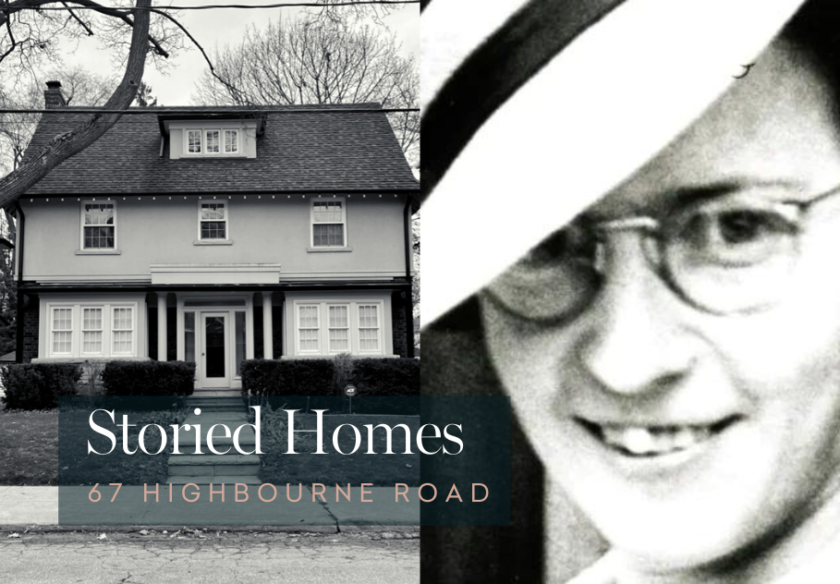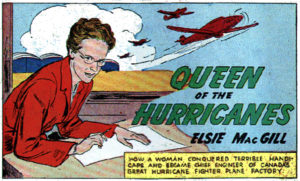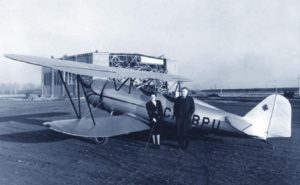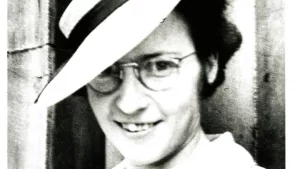
A few years ago, I had the opportunity to participate in Historica Canada’s Advisory Committee for Heritage Minutes (A series of sixty-second short films aired on commercial breaks, each illustrating an important moment in Canadian history), an iconic part of anyone’s childhood who grew up in Canada through the 80s and 90s. It was a fantastic experience that provided an opportunity to revisit Heritage Minutes, the stories they tell and to highlight underrepresented histories through a medium that so many Canadians look back on fondly.
Inspired by last year’s release of a new Heritage Minute commemorating the pioneering engineer Elsie MacGill, I looked into her history and the houses she called home here in Toronto.

MacGill was a true pioneer in all senses of the word – Elsie was the first woman in Canada to earn a bachelor’s degree in electrical engineering and was likely one of if not the first woman in the world to graduate with a master’s degree in aeronautical engineering in 1929. Born in Vancouver in 1905, Elsie was driven to excel in academics as well as advocating for herself and other women, assuming positions in feminist organizations even while confined to bed with polio at the onset of the Great Depression.
Following her recovery, Elsie undertook research at the Massachusetts Institute of Technology, before returning to Canada to begin work on aircraft design – responsible for the design, construction oversight and test flights of the airplanes that came down the production line.

Global Powerhouse & Queen of the Hurricanes.
In 1938, Elsie was offered the position of Chief Aeronautical Engineer at the Canadian Car & Foundry, and with the onset of World War II she equipped the factory to mass produce the famous Hawker Hurricane, a model that played a pivotal role in the Battle of Britain. Dubbed the “Queen of the Hurricanes”, under Elsie’s leadership Canada became a global powerhouse of aircraft construction, with Elsie gaining recognition as a trailblazing engineer who significantly contributed to the county’s wartime efforts.

Elsie MacGill in front of her design for the Maple Leaf II airplane c.1939.
Unfortunately, Elsie’s career at Can Car was cut short in 1943 when it came to light that she was in a relationship with the factory’s works manager. Elsie and William Soulsby left the factory and relocated to Toronto, and Elsie set-up her own highly successful consulting engineering company.
The first house that Elsie and Bill lived in in Toronto still stands on Highbourne Road, in the Chaplin Estates neighbourhood. The house is a handsome, conservative Georgian Revival style home just north of Upper Canada College, and was built around 1930. It features a brick clad first floor, stucco second floor, exposed eaves and high-pitched side gable roof.
Highbourne Road – along with large swaths of North Toronto – is chock full of similar 3-bay centre hall homes. Their popularity was in part due to their relative ease of construction and their practical and spacious interior arrangement, offering sizeable bedrooms, spacious kitchens with modern amenities, and layouts that reflected the changing composition of the 20th century nuclear family. Variations of this form incorporate rooftop dormer windows, additional second floor windows or bays, and front porches.

Elsie and Bill’s first house in Toronto on Highbourne Road
In 1967 Elsie was named to the Royal Commission on the Status of Women in Canada, co-authoring the ground-breaking 1970 report that “defined the status of women as a social problem to be addressed collectively rather than individually” and led to the creation of the Minister responsible for the Status of Women. Elsie received the illustrious Order of Canada in 1971, solidifying her legacy as a professional engineer and an advocate for the rights of women.

Elsie MacGill, 1905-1980.
In 1979 Elsie was awarded the Gold Medal from the professional engineers association, the highest honour they could bestow, “for one of the most distinguished careers in the association’s history”. Elsie MacGill passed away in 1980 while visiting her sister in Cambridge, Massachusetts. If you’d like to take a trip down memory lane, start with the Heritage Minute that shines a light on Elsie, and take a dive into Historica Canada’s archive of Heritage Minutes!
About the Author



